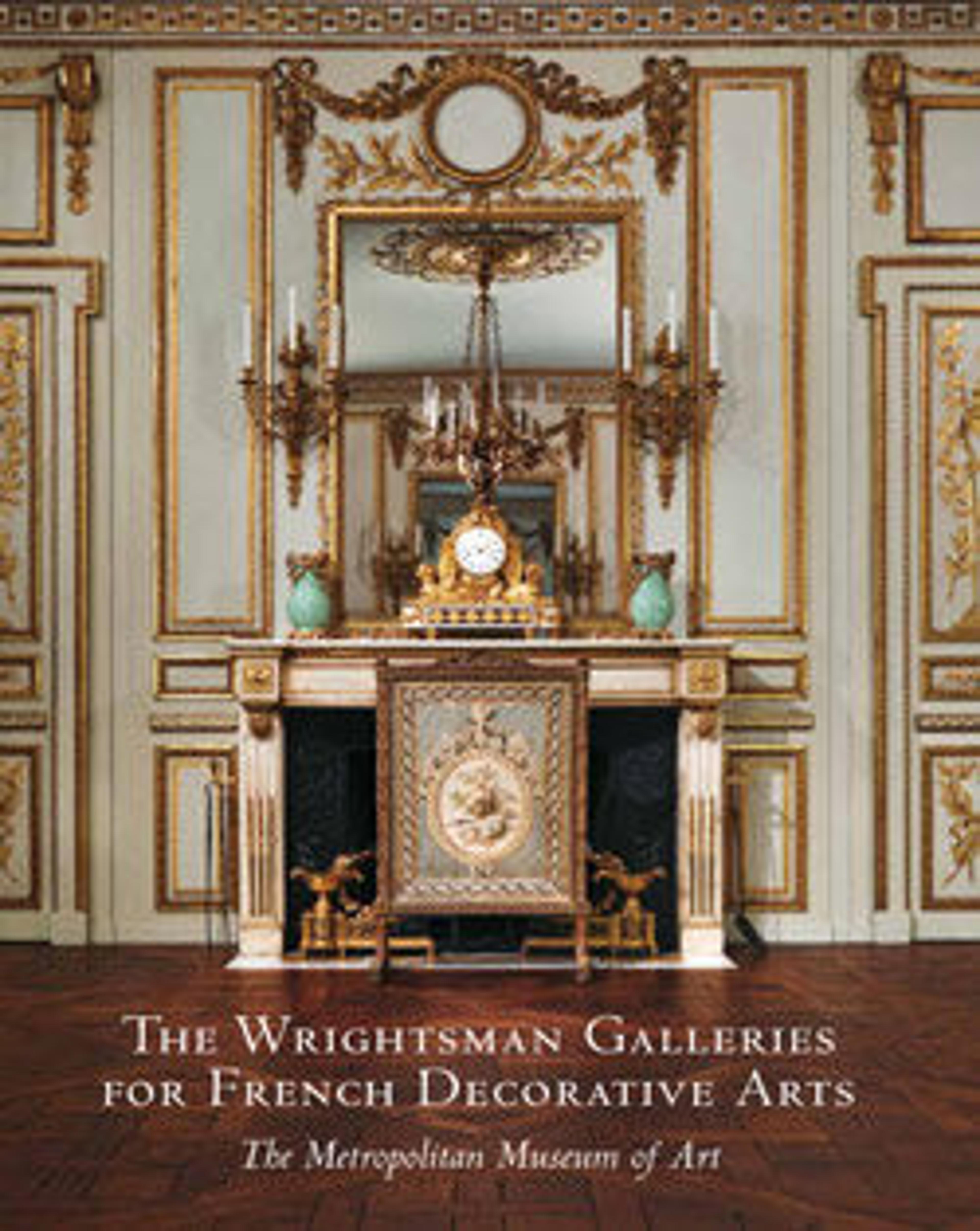Case
The tooled leather box contains six couverts—the French term for two or more matched pieces of flatware—which in this instance each comprise a fork, spoon, and knife. Six identical couverts housed in a similar box are also in the Museum’s collection. It is not known for whom these thirty-six pieces of flatware were made because the coats of arms that decorated each fork, knife, and spoon have been erased. However, the two boxes are decorated on the lids with the Noailles arms, suggesting that a member of that distinguished aristocratic family owned the cutlery in the eighteenth century.
The designs of the flatware are unusually elaborate and ambitious, especially in the use of openwork in the stems of the fork and spoon, and in the molded and chased decoration of the knife blades. The amount of work required by the complexity of the designs marks these as especially fine pieces of silver cutlery. The two sets date from the years 1767–71, but the designs of the fork, spoon, and knife closely resemble those of a gilt silver dessert service made in 1744 by the celebrated silversmith Thomas Germain (1673–1748). Germain’s designs were then copied twenty years later by his son, François-Thomas Germain, for a gold couvert that formed part of the celebrated service made by the latter for the Portuguese court. One of the many silversmiths who assisted Germain with the Portuguese commission was Louis-Joseph Lenhendrick, whose mark appears on the Museum’s flatware. As Lenhendrick had also been apprenticed to the elder Germain, he would have been well acquainted with the design of this couvert.
The designs of the flatware are unusually elaborate and ambitious, especially in the use of openwork in the stems of the fork and spoon, and in the molded and chased decoration of the knife blades. The amount of work required by the complexity of the designs marks these as especially fine pieces of silver cutlery. The two sets date from the years 1767–71, but the designs of the fork, spoon, and knife closely resemble those of a gilt silver dessert service made in 1744 by the celebrated silversmith Thomas Germain (1673–1748). Germain’s designs were then copied twenty years later by his son, François-Thomas Germain, for a gold couvert that formed part of the celebrated service made by the latter for the Portuguese court. One of the many silversmiths who assisted Germain with the Portuguese commission was Louis-Joseph Lenhendrick, whose mark appears on the Museum’s flatware. As Lenhendrick had also been apprenticed to the elder Germain, he would have been well acquainted with the design of this couvert.
Artwork Details
- Title:Case
- Date:1767–71
- Culture:French, Paris
- Medium:Leather
- Dimensions:Overall: 2 1/2 x 9 1/2 x 8 15/16 in. (6.4 x 24.1 x 22.7 cm)
- Classification:Natural Substances-Leatherwork
- Credit Line:Gift of Mr. and Mrs. Charles Wrightsman, 1979
- Object Number:1979.396.40
- Curatorial Department: European Sculpture and Decorative Arts
More Artwork
Research Resources
The Met provides unparalleled resources for research and welcomes an international community of students and scholars. The Met's Open Access API is where creators and researchers can connect to the The Met collection. Open Access data and public domain images are available for unrestricted commercial and noncommercial use without permission or fee.
To request images under copyright and other restrictions, please use this Image Request form.
Feedback
We continue to research and examine historical and cultural context for objects in The Met collection. If you have comments or questions about this object record, please contact us using the form below. The Museum looks forward to receiving your comments.
